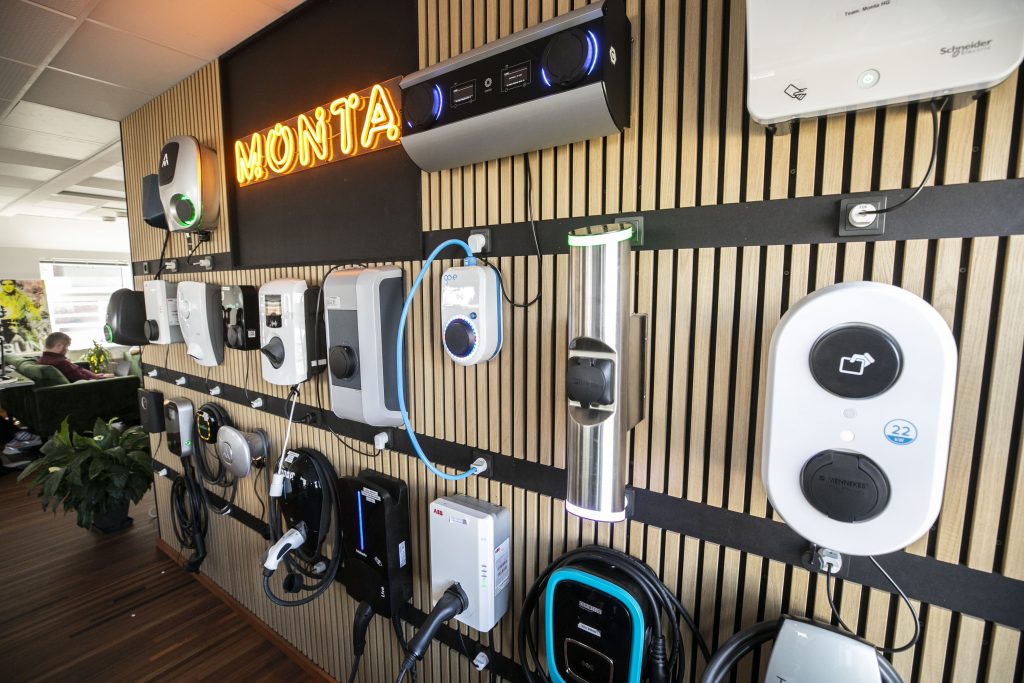There’s still plenty of time until the 2030 ban on new petrol and diesel vehicle sales, but the electric vehicle (EV) dream is fast becoming a reality, says Alok Dubey, UK country manager at Monta.
EV sales have somehow managed to steer clear of a Covid-ravaged market, with sales outpacing all market expectations. Whereas new vehicles registered in the UK fell more than 28% below pre-Covid levels, more battery EVs were registered than in the previous five years combined, increasing by a whopping 58% in just twelve months.
Projections also show Europe’s EV fleet growing from its current base of less than 5 million to 65 million by 2030 and then doubling over the following five years.
And, barring any rapid developments in hydrogen technology, electric will soon be the only option for consumers wishing to purchase a brand new vehicle.
There’s clearly no lack of appetite for EVs, but such growth could pose an immediate challenge on existing infrastructure. There are also some drivers yet to be convinced to make the switch to electric, something which the government, car brands and EV charge manufacturers across the globe must work towards.
2030 will come down the road faster than we know, and there are plenty of roadblocks that still need to be ironed out before we become fully reliant on electric.
1. Improve visibility into charge points
Currently, gaining access to public charging points is overly complex. Drivers simply don’t have enough visibility into where the nearest charger is, if it’s a rapid charger, or if it’s being used. With less than eight years until the mass uptake of electric vehicles, having enough publicly available charging networks across the UK and EU to meet demand is proving a significant roadblock.
A 2020 report from the International Council on Clean Transportation found the UK has less than 5% of the chargers it needs by 2030 currently installed. With a mere one in nine European charging points being fast charging.
Technology can and should help to enhance utilisation of public charge points. More and more charge point manufacturers are realising the benefits of linking hardware with software, and there are now a range of apps and platforms available to drivers and charge point owners that provide better visibility into the charging experience.
Virtual queueing systems are becoming more commonplace within public charge networks, while reservation features are also helping reduce waiting times for available chargers. Having a universal standard for public charge points will be a huge driver towards normalising EVs and the charging process.
2. Smoothen payment options
Although you can drive past a filling station and see the fuel price, the same can’t be said for EV charging stations. Some are completely free, some charge per minute, and some by energy use (kWh).

This charging lottery is creating unnecessary confusion among drivers, with many unsure what the final price will be. It also makes comparing prices difficult when looking to charge. Coupled with a lack of smart applications connected to the hardware, drivers are left in the dark about how much their charging experience is actually costing them.
Legislation will play a big role in providing better transparency for drivers with the government advising that all new rapid chargers built from spring 2020 should accept pay-as-you-go and contactless card payments.
3. Make Alternative Current (AC) charging the norm
Whilst it is true that AC charging may not be as rapid as DC charging, it requires a significant amount more power from the grid than AC charging, resulting in costlier charging tariffs, as well as placing an immediate strain on the grid.
In contrast, AC charging may take longer to charge an EV’s battery, as it does not draw as much power from the grid, but it is much more cost effective for the EV driver and the economy, as it places less strain on the grid and reduces the risk of brownouts.
When you consider the above and that a car stands still 90% of the time, as well as the up front cost of up to £50,000 for a DC charging point, AC charging should be the norm.
It is good that the market is responding to the increased demand for EVs with, for example, Shell opening up the UK’s first ‘EV hub’ in London, providing ultra-rapid charge points to deliver full batteries within 30 minutes.
DC charging has its uses, such as, for example if a driver has a sudden need to charge during a long motorway journey. However, there really does need to be careful consideration taken about flooding the streets with rapid charging points, given the AC alternative.
4. Universally accessible charge points
Imagine that you’ve driven miles to find a charge point on a low battery, and just as you get ready to plug it in find that it’s not compatible with your vehicle. This is the sad reality with a lot of single-brand charging points.
For example, although Tesla recently opened up its charging network to other electric cars in the Netherlands, it’s still Tesla vehicles only in the UK. But it’s not just Tesla, as lack of collaboration between major charge point manufacturers is hindering EV sales from skyrocketing.

Moving to universal chargers will be key to meeting the 2030 new petrol and vehicle sales ban, especially if we continue to lag behind with the number of publicly available charge points needed to meet demand. Having charging points that some EV drivers can’t use is counterproductive, and will only continue to put-off consumers from investing in EVs.
Whether it is your dream or not, EV is coming and the government, car brands and EV charge manufacturers must work together to smoothen the charging experience, and avoid the potential EV nightmare due to hit our streets in 2030.
The author is Alok Dubey, UK country manager at Monta.
Comment on this article below or via Twitter: @IoTNow_OR @jcIoTnow










